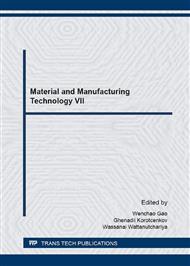p.235
p.242
p.248
p.253
p.261
p.266
p.271
p.276
p.281
Effects of Hydroxyapatite/Silk Fibroin/Chitosan Ratio on Physical Properties of Scaffold for Tissue Engineering Application
Abstract:
This study reports the effects of the mixing ratio of hydroxyapatite (HA), silk fibroin (SF) and chitosan (CS) on the physical properties of the scaffold used in tissue engineering. Experimental design based on mixture design was implemented to investigate the degradation rate of the scaffolds fabricated from various ratios of those biomaterials. Furthermore, pore morphology and pore size were evaluated to confirm the compatibility of the scaffold topography for cell growth and adhesion. The results from the study showed that all ratios, except pure HA solution, can be fabricated into porous scaffolds with an interconnected pore structure and appropriate pore sizes to allow all types of human cells to pass through. Furthermore, the scaffold solutions with high CS ratio resulted in a uniform pore structure and lower rates of biodegradation. Therefore, CS is recommended as the main structure because it provides the highest resistance to biodegradation. The scaffolds from various ratios may be applied for different tissue replacements in the near future.
Info:
Periodical:
Pages:
261-265
Citation:
Online since:
September 2016
Authors:
Price:
Сopyright:
© 2016 Trans Tech Publications Ltd. All Rights Reserved
Share:
Citation:


